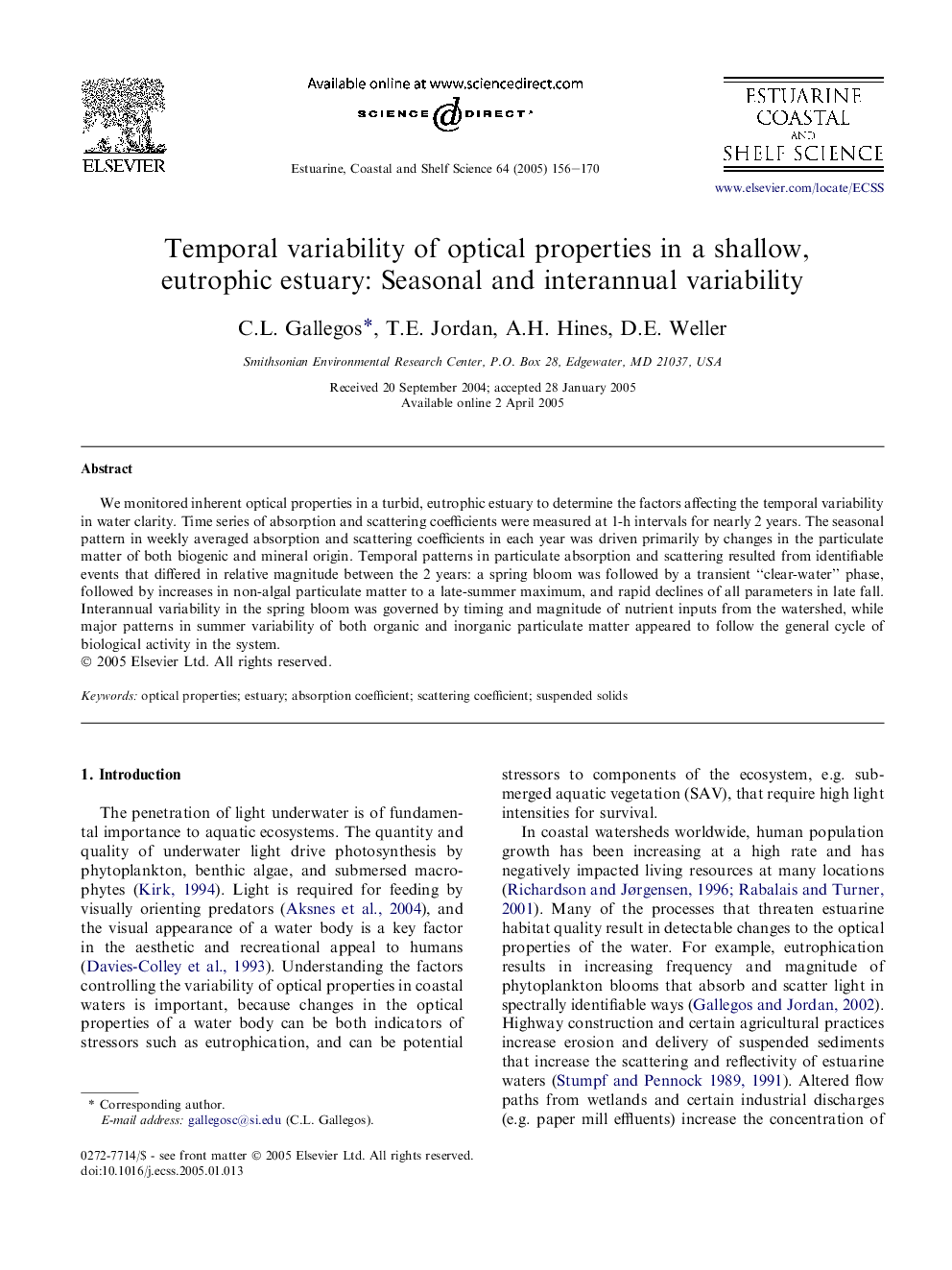| Article ID | Journal | Published Year | Pages | File Type |
|---|---|---|---|---|
| 9480563 | Estuarine, Coastal and Shelf Science | 2005 | 15 Pages |
Abstract
We monitored inherent optical properties in a turbid, eutrophic estuary to determine the factors affecting the temporal variability in water clarity. Time series of absorption and scattering coefficients were measured at 1-h intervals for nearly 2 years. The seasonal pattern in weekly averaged absorption and scattering coefficients in each year was driven primarily by changes in the particulate matter of both biogenic and mineral origin. Temporal patterns in particulate absorption and scattering resulted from identifiable events that differed in relative magnitude between the 2 years: a spring bloom was followed by a transient “clear-water” phase, followed by increases in non-algal particulate matter to a late-summer maximum, and rapid declines of all parameters in late fall. Interannual variability in the spring bloom was governed by timing and magnitude of nutrient inputs from the watershed, while major patterns in summer variability of both organic and inorganic particulate matter appeared to follow the general cycle of biological activity in the system.
Related Topics
Physical Sciences and Engineering
Earth and Planetary Sciences
Geology
Authors
C.L. Gallegos, T.E. Jordan, A.H. Hines, D.E. Weller,
